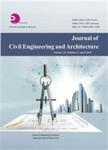Tenure of Urban Land: Structure, Form and Transformation in Ribeirao Preto, Brazil
Tenure of Urban Land: Structure, Form and Transformation in Ribeirao Preto, Brazil作者机构:CEA TEC (Center for Exact Sciences Environment and Technology) Pontifical Catholic University of Campinas Campinas 13 090 610. Brazil
出 版 物:《Journal of Civil Engineering and Architecture》 (土木工程与建筑(英文版))
年 卷 期:2016年第10卷第1期
页 面:108-121页
学科分类:12[管理学] 1204[管理学-公共管理] 08[工学] 081303[工学-城市规划与设计(含:风景园林规划与设计)] 0813[工学-建筑学] 0833[工学-城乡规划学] 083302[工学-城乡规划与设计]
主 题:Tenure emphyteusis urban land Catholic Church urban morphology concession of lands.
摘 要:The purpose of this study is to explore the urban morphological aspects of cities governed by the juridical regime of emphyteusis, a recurrent situation in the northeastern part of the state of Silo Paulo, Brazil, with special attention to the city of Ribeirao Preto. The concession of lands to the Catholic Church was a recurring practice in Brazil during the colonial and imperial periods, when the cities were being established. As these lands were intended for the formation of patrimonial goods to show the devotion of the residents to a Catholic saint, the lands were not allowed to be commercialized. The tenure reveals a relation in which there is an owner--the landlord--who has direct control of the urban land. This owner allows another--the leaseholder--the useful domain of the land, thus giving the latter the right to use the land, the obligation to pay an annual tax and the responsibility to give the owner a percentage of the sales generated from the land. In 1845, farmers donated a tract of land to be used to glorify Silo Sebastiao. This land is now the city of Ribeirao Preto, and it is this conjuncture that defined the structure and the transformation of the original urban form of the current city.



